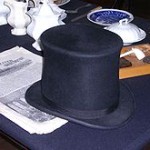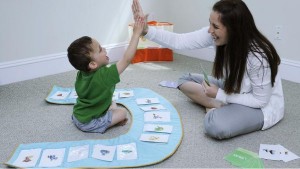Real Life Planning Part 4 – Turning Your Plan Into Inspiration For Your Children
In the last two posts, we discussed collecting information from online resources and using the library to create lesson plans and inspirational ideas for The Spark Station. Now,let’s look at the last issue, “When do I find time to get all this stuff together?” The answer is “one day at a time”.
Using the cut and paste document you made when you did your research and the books which you have gotten from the library you are going to “inspire” your children one day at a time, possibly just one week at a time.
Day or week 1 – Put a book on the Lewis and Clark Expedition in The Spark Station with the coloring page you have downloaded. Let your children look at the pictures if it is a “coffee table type book”. If it is a story written for children you can read it to them if they are small or they can read it to themselves depending on age and interest. However, survey books like this usually do really well as a group read.
coloring page you have downloaded. Let your children look at the pictures if it is a “coffee table type book”. If it is a story written for children you can read it to them if they are small or they can read it to themselves depending on age and interest. However, survey books like this usually do really well as a group read.
Day or week 2 – Have copies of the map that you downloaded that shows the route they traveled. Supply the materials to make a replica of the map from clay. (I would jettison the plywood and use a piece of cardboard)
Day or week 3 – Add the book on Native Americans. You could also put in the book  about Sacagawea. Have the materials and directions for making a rattle or totem pole, etc.
about Sacagawea. Have the materials and directions for making a rattle or totem pole, etc.
Day or week 4 – Include information about the Hidatsa people and their language. Have materials for your children to write a letter in a language they create. They can choose a symbol for each letter of the alphabet. Send it to a friend or relative. You could also have materials to create a clay lodge.
Day or week 5 – Have a book on trappers and the directions for  making a parfletche. (I would jettison the canvas and use brown paper bags) The parfleche was a staple of Native Americans in the seventeenth century. A beautifully decorated rawhide storage bag, it was used to store dried meats, clothes, sewing supplies, and other important items. It was adopted by trappers. This would also be a good day to
making a parfletche. (I would jettison the canvas and use brown paper bags) The parfleche was a staple of Native Americans in the seventeenth century. A beautifully decorated rawhide storage bag, it was used to store dried meats, clothes, sewing supplies, and other important items. It was adopted by trappers. This would also be a good day to add a book on beavers as that was the main staple for trappers. You might want to show them a beaver hat which was worn in Europe. This is where the majority of skins were shipped.
add a book on beavers as that was the main staple for trappers. You might want to show them a beaver hat which was worn in Europe. This is where the majority of skins were shipped.
Day or week 6 – Begin with a book on canoes and other means of travel for trappers, the Clark expedition and Native Americans. Have information on the keel boats they used even if it is only the pictures you have printed off your computer. Have the materials in The Spark Station to make a keel boat or canoe. If it is the right season it would be fun to find a neighbor who has a canoe or rent a canoe and go for a ride on a quiet pond in your area. Carry the supplies with you for a picnic lunch. Talk about things you “discover” on your family adventure.
Have information on the keel boats they used even if it is only the pictures you have printed off your computer. Have the materials in The Spark Station to make a keel boat or canoe. If it is the right season it would be fun to find a neighbor who has a canoe or rent a canoe and go for a ride on a quiet pond in your area. Carry the supplies with you for a picnic lunch. Talk about things you “discover” on your family adventure.
Day or week 7 – Add books about animals, birds and plants that Meriwether and Clark identified and wrote about. You could download coloring pictures of these animals and plants. Do any of these plants grow in your area?
Day or week 8 – Have some traditional recipes and the non-perishable ingredients in The Spark Station. Prepare items to be eaten as a school treat or for the family dinner. Any of the items you have made could be used as a centerpiece. Small canoe’s or parfletches would make nice place cards.
Day or week 9 – Learn about President Thomas Jefferson. There are  downloadable color pages available. Read a survey book or look at a book of pictures.
downloadable color pages available. Read a survey book or look at a book of pictures.
Day or week 10 – Have a list of items to “discover” on your own expedition. They could include a white rock, purple flower, feather and any other item that might be found in a walk through the neighborhood, park or in your own backyard.
All the time that you are watching and assisting your children to do these activities you just visit with them about the people who made up the trek, the trials they had, what they saw, what they did, and what they discovered. Carry these conversations to the dinner table to share with dad, while riding in the car or as you tuck them into bed.
Just throw out a fact or ask a question and start a “familiar conversation”. “Did you know that Sacagawea means Bird Woman?” They might ask you more about her and there you have your conversation going. You can keep the conversation going by asking questions such as, “Do you think it would be hard to have a baby on a trek like that?” “Do you think she was really helpful to the expedition?” Do this all the time you are inspiring your children with a topic.
This is the perfect scenario. Not every day or week will go like this. Sometimes there are intervening circumstances. You still have a Sprk Station filled with interesting things; as often as you can add something new. What if you only added something new twice a month or even just once a month? It is better to do a little than nothing at all because we are paralyzed, feeling that we can’t do enough.
Can you see how just a little bit would really energize your family learning time and bring joy and excitement to your children? Can you see how they would begin to love learning?
It’s not an issue of buying fancy stuff for The Spark Station. It is an issue of thinking, receiving inspiration and then following through.
Possibly Related Posts:
- 5 Creative Writing Exercises for Kids of All Ages
- 5 Ways to Help Your Child Think Like a Scientist
- Inspiring Learning
- Family Philanthropy Project – How to Grow Your Family’s Heart by Jodie Palmer
- Science of making Ice cream with liquid nitrogen





{ 0 comments… add one now }